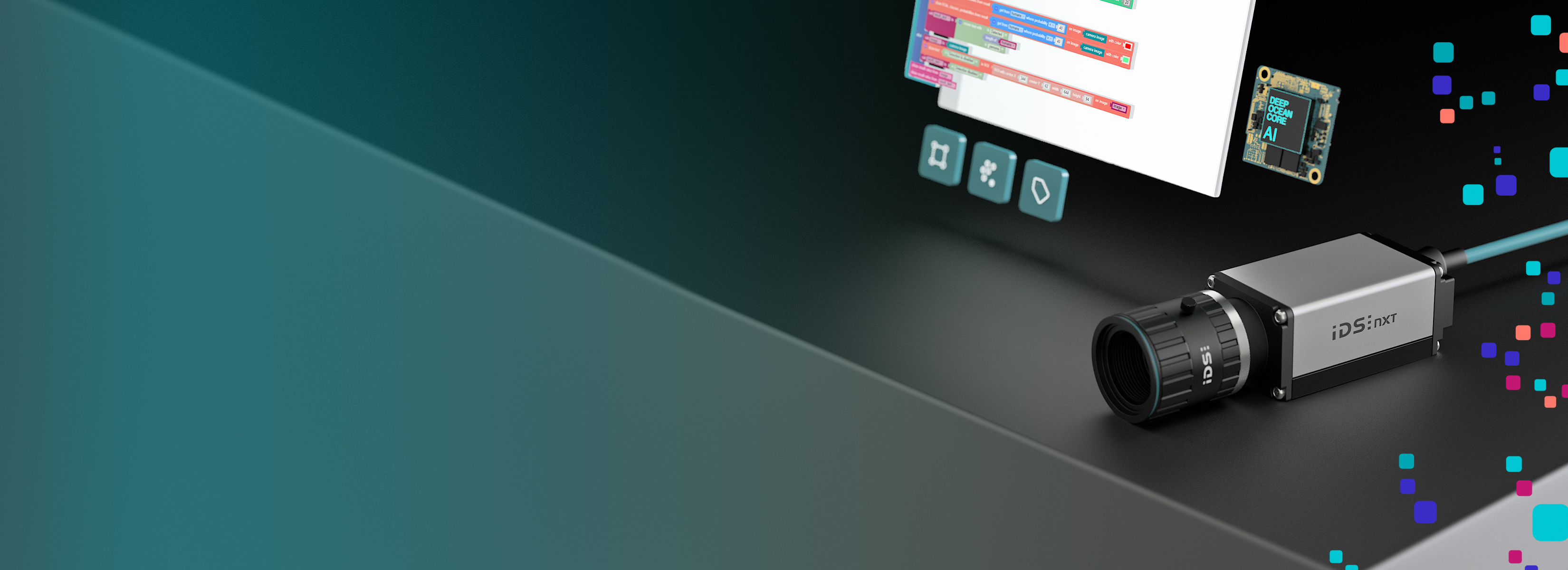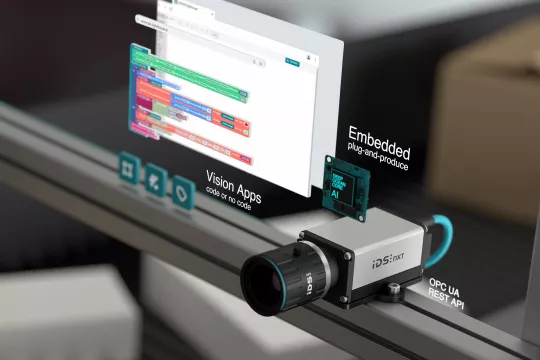

For beginners and professionals
IDS NXT - Image analysis with AI
This is how Deep Learning can be used quickly, easily and cost-effectively - by everyone in all industries. IDS NXT is the all-in-one system for the use of intelligent cameras. You benefit from user-friendly workflows and perfectly coordinated hardware and software.
The smart way to use Deep Learning for industrial cameras!
IDS NXT is the user-friendly, AI-based all-in-one vision system. It consists of intelligent, programmable cameras and a versatile software environment. The system covers the entire workflow from capturing and labelling training images to training the networks, creating apps for evaluation and actually running applications.
This means that image processing with artificial intelligence can be used even without prior knowledge of Deep Learning or application programming - and in a wide variety of industries and application scenarios.
Optimally coordinated components
Thanks to expert tools, even open-platform programming is possible. In addition, updates provide new functions regularly and free of charge. IDS NXT cameras therefore offer maximum flexibility - at the cutting edge of technology and with a focus on transparency and ease of use. Discover now what opportunities this opens up for your applications.

What is IDS NXT?
Would you like to get an overview of IDS NXT, learn about its economic benefits and its many possible applications? Then click here. Click here.
How does IDS NXT work?
Are you curious about how to work with the AI system? Then visit this page and get insights into workflows and key figures.
